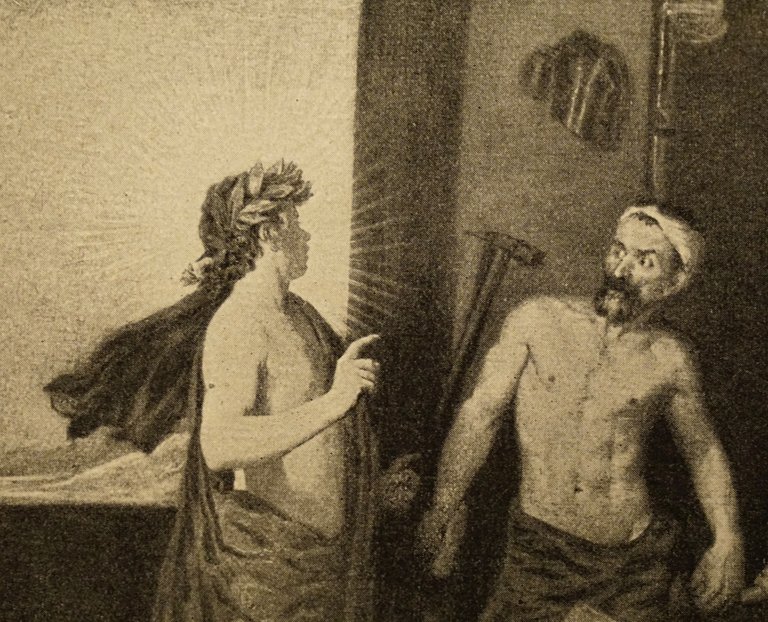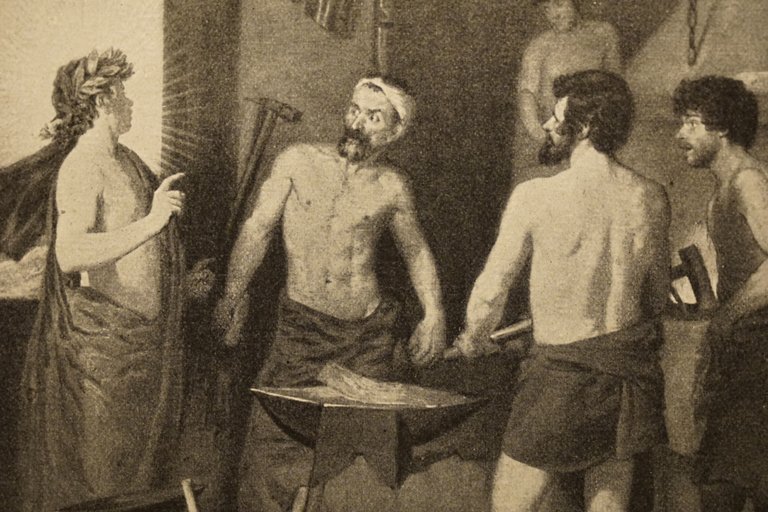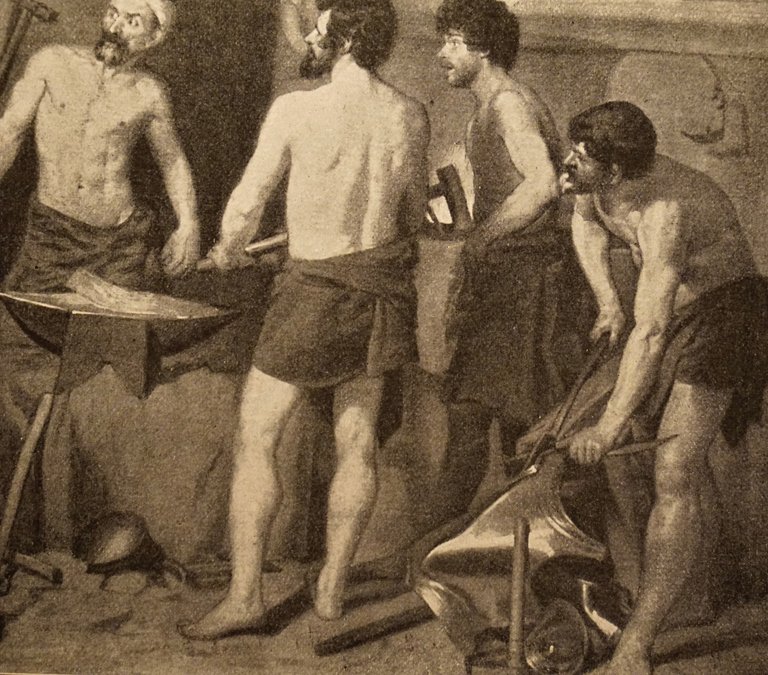In the Forge of Vulcan by Diego Velazquez
Hey dear community, first of all I would like to wish you all a pleasant day and hope you had a great start to the new week! In this post, I would like to talk a little about art history and hope you can expand your knowledge.
Here you can see a print that is supposed to represent the forge of the Roman god Vulcan, which is known as the equivalent of Hephaestus from Greek mythology, and this print was created in 1911. The original work was created by the Spanish painter Diego Velázquez (1599 - 1660), who is considered one of the most famous Spanish artists and is known worldwide and he was particularly known for creating his portraits and he is also considered a representative of the Baroque era. The former Spanish king Philip IV (1605 - 1655) from the house of the Habsburgs was even so strongly impressed by his art that he had decided to hire him at his court where he had the task of painting members of the royal family. The original work of Velazquez was created in 1630 and for the creation he used oil paints and is a good example of Velazquez's interest in mythology as well as blacksmithing and he is one of the best-known artists who expressed the Roman god of fire and blacksmithing in the visual arts. In the scene depicted, the God of Light Apollon spontaneously visits the forge and when he stood in front of the door, the assistants were very surprised and Velazquez expressed this amazement well and the forge was portrayed as a rather gloomy place. Apollon was not there to commission weapons or armor but to announce a message and he reported that his wife would have an affair with the war god Mars and therefore also the astonished look of the assistants can be traced back and Vulcan was himself is depicted on the right site in the painting. He and his assistants were in the process of forging armor for the other gods and the forge was painted with great attention to detail and all in all the painting looks extremely expressive and brings out the emotions well. The tradition of this legend can probably be traced back to the poet Ovid and Velázquez was influenced by Roman mythology from his travels in Italy where he was strongly interested by Italian art and the painting was probably created in Rome and was then brought to Spain and the original painting can now be found in the Prado Museum in Madrid.
Thanks for stopping by and I hope you could learn something new about art history! I captured these pictures with my Camera Sony Alpha 6000 plus 55-210 mm lens.




A few years ago, people used to live a simple life in the same way.
Thanks for sharing your thoughts with me :)
https://twitter.com/lee19389/status/1782874503250329979
#hive #posh